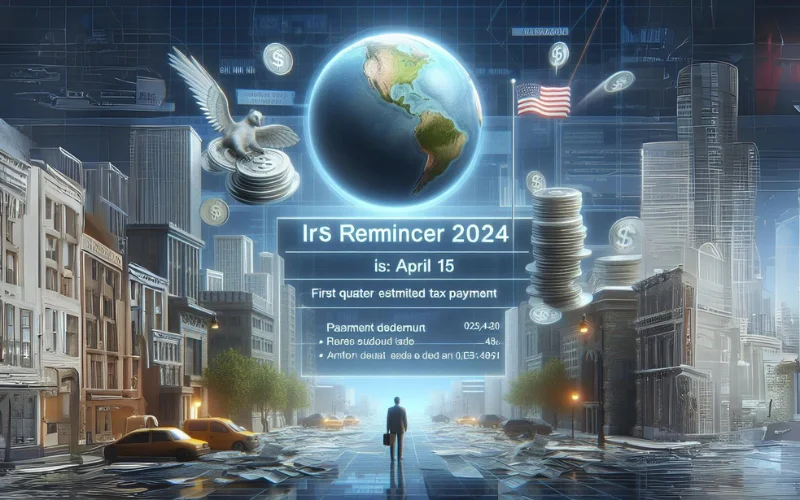As the April 15 filing deadline approaches, the Internal Revenue Service issued a reminder to taxpayers on ways to prevent typical errors on their federal tax returns to help speed potential refunds.
Collect all tax-related paperwork
Taxpayers should collect all key documents, including Forms W-2 and 1099, as well as any supporting paperwork for tax deductions or credits such as educational credits or mortgage interest payments. Additionally, having the previous year’s tax return accessible is advisable as it may be required.
Use electronic filing
The IRS advises taxpayers and their tax advisors use electronic filing methods such as IRS Free File or alternative e-file service providers. The Direct File pilot is available for some taxpayers in 12 states. Electronic filing minimizes mathematical errors and identifies potential tax credits or deductions for which the taxpayer qualifies.
It’s essential for taxpayers to carefully review their tax returns to ensure accuracy. Opting for electronic filing and selecting direct deposit is the fastest and safest way to receive a refund.
Ensure filing status is correct
Tax software serves to prevent errors in selecting a tax return filing status. For taxpayers unsure of their filing status, the Interactive Tax Assistant on IRS.gov can assist in choosing the correct status, particularly when multiple statuses might apply.
Make sure names, birthdates and Social Security numbers are correct
Taxpayers must accurately provide the name, date of birth and Social Security number for each dependent listed on their individual income tax return. The SSN and individual’s name should be entered precisely as indicated on the Social Security card.
In cases where a dependent or spouse lacks a SSN and is ineligible to obtain one, an assigned Individual Tax Identification Number (ITIN) should be listed instead of a SSN.
Answer the digital assets question
Everyone who files Forms 1040, 1040-SR, 1040-NR, 1041, 1065, 1120 and 1120S must check one box answering either “Yes” or “No” to the digital asset question. The question must be answered by all taxpayers, not just by those who engaged in a transaction involving digital assets in 2023. Taxpayers must report all income related to digital asset transactions.
See IRS.gov Digital Assets for details on when to check “yes” and how to report the income.
Report all taxable income
Keep in mind that most income is subject to taxation. Failing to accurately report income may result in accrued interest and penalties. This includes various sources of income such as interest earnings, unemployment benefits and income derived from the service industry, gig economy and digital assets. For further details, consult Publication 525, Taxable and Nontaxable Income.
Make sure banking routing and account numbers are correct
Taxpayers have the option to request direct deposit of a federal refund into one, two or even three accounts. Provide correct banking information: If expecting a refund, ensure the routing and account numbers provided for direct deposit are accurate to avoid delays or misdirected refunds.
Additionally, taxpayers can use their refund to buy U.S. Savings Bonds.
Remember to sign and date the return
When submitting a joint return, it is required for both spouses to sign and date the return. If taxpayers are preparing their taxes independently and filing electronically, they need to sign and authenticate their electronic tax return by inputting their adjusted gross income (AGI) from the prior year. Taxpayers can refer to Validating Your Electronically Filed Tax Return for guidance if they have any inquiries.
Ensure address is correct if mailing paper returns
Taxpayers and tax professionals are urged to choose electronic filing whenever possible. However, for those who must submit a paper tax return, it’s essential to verify the accurate mailing address either on IRS.gov or in the instructions provided with Form 1040 to prevent processing delays.
Keep a copy of the tax return
Upon readiness to file, taxpayers should create duplicates of their signed return and any accompanying schedules for their personal records. Maintaining copies can help them prepare future tax returns and figure mathematical computations in the event of filing an amended return. Typically, taxpayers should retain records supporting income, deductions or credits claimed on their tax return until the period of limitations for that specific tax return expires.
Request an extension, if needed
Taxpayers requiring more time to file their taxes can easily request a six-month extension until October 15, thereby avoiding late filing penalties. This extension can be requested either through IRS Free File or by submitting Form 4868, Application for Automatic Extension of Time to File U.S. Individual Income Tax Return, by April 15. It’s important to note that while an extension provides extra time for filing, tax payments are still due on April 15 for most taxpayers.
Alternatively, taxpayers can seek an extension by making a full or partial payment of their estimated income tax and indicating that the payment is for an extension. This can be done using Direct Pay, the Electronic Federal Tax Payment System (EFTPS), or a debit/credit card or digital wallet. By doing so, taxpayers avoid the necessity of filing a separate extension form and receive a confirmation number for their records.





